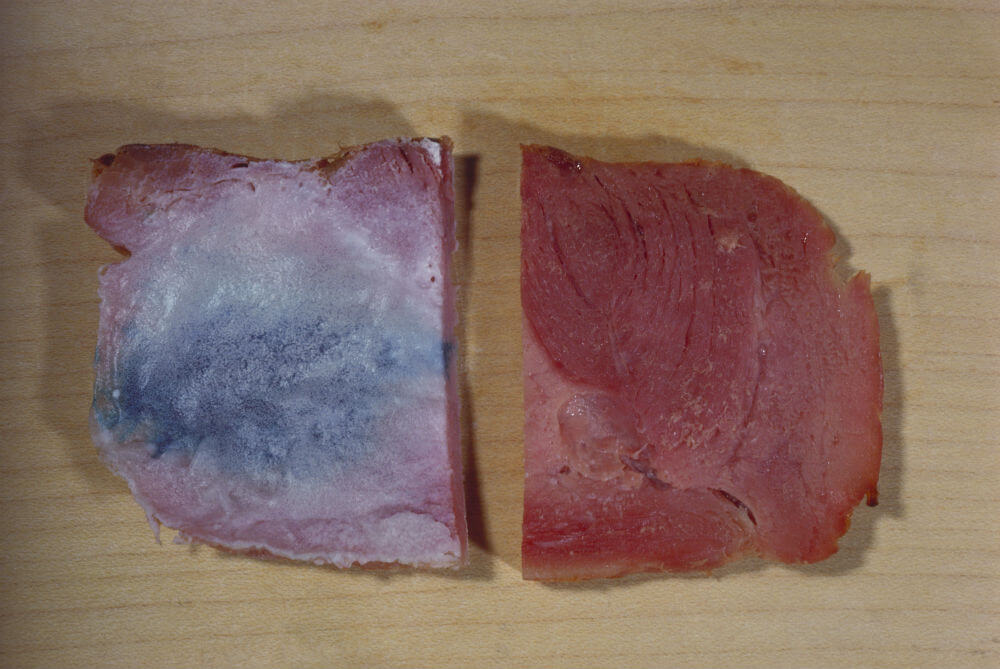Prevent food spoilage—save up to $200
January is the month with the highest food spoilage claims
Advertisement
January is the month with the highest food spoilage claims

Does anyone remember the 2013 North American ice-storm that cut power to over a million residents in the U.S. and Canada and caused over US$200-million in damages? I do. Not only was my second child only a few months old—prompting me to constantly keep a fire burning in our wood-burning fireplace—but my husband worried that the game-meat he spent months hunting would spoil in just a few days.
Fact is power outages can wreak a lot of havoc. Of course making sure people are safe and taken care of is integral, but once the basics are assured than it’s down to the small details, like food spoilage.
A new survey, from Protect Your Bubble, a U.S.-only extended warranty provider, found that the average value of food that spoils when a fridge stops working is US$173.37 (or CAD$215.09, as of Feb. 3, 2015).
That’s a lot of food. And it turns out that some months are more prone to food spoilage claims than others. For instance, in the past January has seen the highest number of food spoilage claims, according to the survey. Followed by May, July, June and April (respectively).
Not surprisingly, of those surveyed 61% reported that they were most concerned with meat spoilage, 30% worried about milk and 7% were concerned about rotting vegetables.
“Food spoilage isn’t top of mind when you’re looking to protect the contents of your home or apartment,” said Stacey Vogler, managing director at Protect Your Bubble. “However, the loss of food in any power outage as a result of a weather event or another type of disruption can be a costly inconvenience, no matter what the temperature is outside.”
For some safe tips to prevent food-borne illnesses follow these tips:
Check your freezer and refrigerator to make sure they’re at proper temperatures. Food must be kept between 35°F and 40°F to stay fresh, says Patricia Kendall, a professor of food science and nutrition at Colorado State University. But most fridges just have a dial, and what “cold” and “coldest” mean can vary from fridge to fridge. Instead, use a portable thermometer to check the temperature of your freezer and fridge. A freezer should be -18°C (or 0°F). The fridge should be no warmer than 3°C (38°F).
Keep food in the proper location in your fridge. Do you keep butter in the fridge door? Stop. Dairy products are more susceptible to food spoilage and, for that reason, need to be kept in the second coldest part of your fridge—typically a shelf in your fridge, not in the door of your fridge. While the coldest part of your fridge is the meat drawer (or last shelf) the next coldest is the shelf directly above. Move all your dairy—cream, milk, yogurt, cheese—to this shelf to slow the spoilage of these products.
Did you know you should keep some fruits and veggies out of the fridge? For instance, tomatoes should be kept at room temperature on your counter, as should most tropical fruits such as pineapple or mango. Potatoes are another vegetable that don’t need to be kept in the fridge, but they should be kept in a cooler, dark place, such as a pantry cupboard.
To minimize spoilage keep meat in the coldest part of the fridge—typically in a meat drawer (if your fridge has one) or on the bottom shelf. Another advantage to keeping your meats down low is that there is less chance of the juices contaminating other foods in the fridge.
Learn to separate fruits and veggies in your fridge. I’ll admit it: I’m a bit of an obsessive-compulsive when it comes to stocking a fridge. But evidence shows that my tendency to want to sort has a benefit. That’s because some fruits, such as apples, peaches and bananas, release ethylene gas as they age—and other fruits and veggies absorb this gas, ripen more quickly and this leads to food spoilage. So separate your apples and peaches from your carrots, berries, and leafy greens and you may be able to avoid the weekly green-bin round-up of rotting produce.
I’d love to know how Canadians handled the 2013 ice-storm as well as last week’s snowstorm that left Atlantic Canada with half a metre of snow. Food spoilage was probably not a top priority as pictures from the east coast showed near-blizzard conditions on highways.
Read more from Romana King at Home Owner on Facebook »
Share this article Share on Facebook Share on Twitter Share on Linkedin Share on Reddit Share on Email